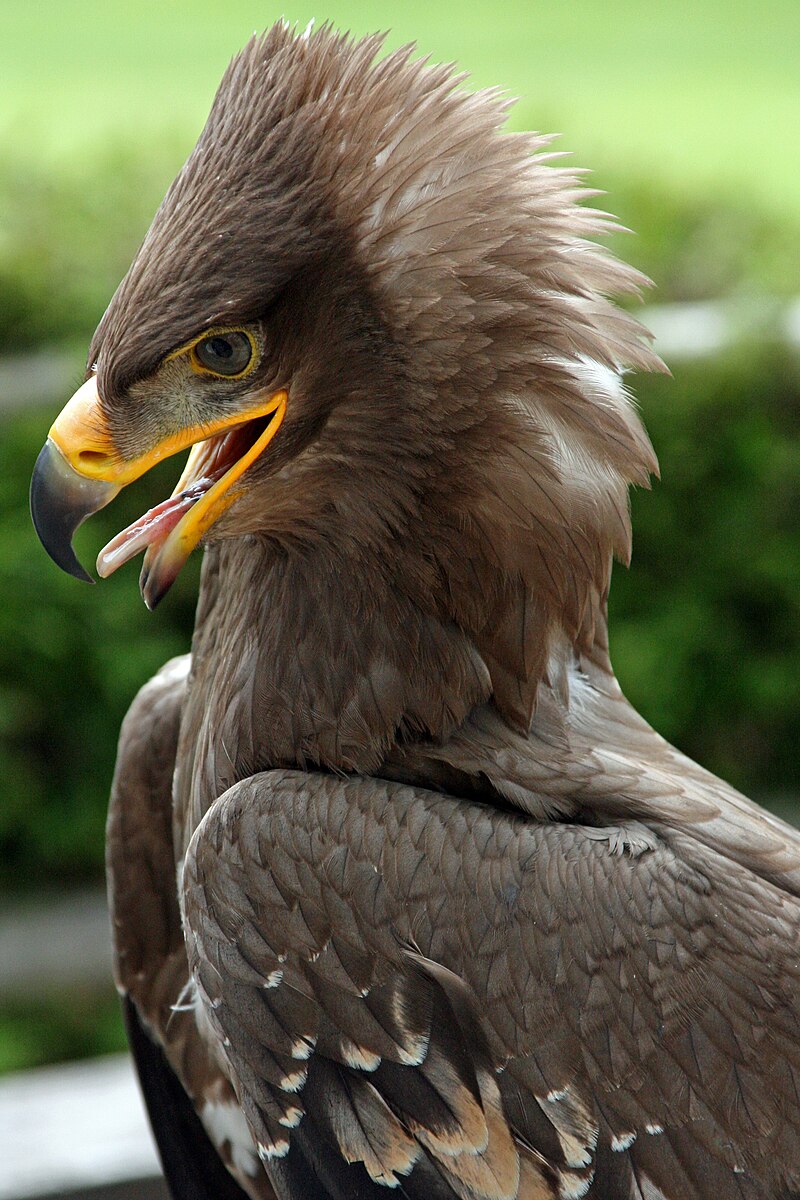Steppe eagles, also known as Aquila nipalensis, are large birds of prey that are native to the open grasslands and semi-deserts of Europe, Asia, and Africa. These majestic birds are known for their impressive size, distinctive plumage, and fascinating mating habits.
Do Steppe Eagles Mate for Life?
Yes, steppe eagles are monogamous birds, meaning they mate for life. Once a steppe eagle has found a partner, they will typically stay with that same mate for the duration of their lives, which can be up to 41 years in captivity.
Courtship and Mating Rituals
 Image source: Steppe Eagle by Fimb
Image source: Steppe Eagle by Fimb
The mating process for steppe eagles involves a series of elaborate courtship rituals. The male steppe eagle will perform a series of undulating displays, including high circling, alone or in pairs, over the nesting site. The male may also perform a series of “pot hooks,” which involve a series of gradual dives and swoops, with little to no wing flapping. The female may respond by turning over and presenting her claws in response to the male’s display. The pair may also lock claws in flight as part of their mating ritual.
Nest Building and Egg Laying
Once a pair of steppe eagles has mated, they will build a platform nest, generally in a tall tree. Egg laying typically begins in late April to early May, after the nest is complete. The male is responsible for defending the immediate vicinity around the nest.
Breeding Season and Nesting Habits
The breeding season for steppe eagles varies depending on their geographic location. In some regions, they may breed as early as late March, while in other areas, the breeding season may not begin until May or June. Steppe eagles typically return to the same nesting site year after year, demonstrating a strong attachment to their territory and partner.
Lifespan and Longevity
Steppe eagles are known for their longevity, with some individuals living up to 41 years in captivity. In the wild, their average lifespan is typically around 20-25 years. This long lifespan, combined with their monogamous mating habits, allows steppe eagles to form strong, long-lasting pair bonds.
Threats and Conservation Status
Steppe eagles face a number of threats, including habitat loss, hunting, and poisoning. As a result, their population numbers have declined in recent years, and they are currently classified as “Vulnerable” on the IUCN Red List of Threatened Species. Conservation efforts, such as habitat protection and anti-poaching measures, are crucial to ensuring the long-term survival of these magnificent birds.
In conclusion, steppe eagles are fascinating birds that demonstrate a strong commitment to their mates and their breeding territories. Their elaborate courtship rituals, monogamous mating habits, and long lifespans make them a unique and captivating species to study and observe.
References:
- Aquila pomarina: INFORMATION – Animal Diversity Web, https://animaldiversity.org/accounts/Aquila_pomarina/
- The ‘Queen’ Steppe Eagle hoping to find love at Muncaster Castle, https://www.whitehavennews.co.uk/news/24124904.queen-steppe-eagle-hoping-find-love-third-match/
- Aquila rapax: INFORMATION – Animal Diversity Web, https://animaldiversity.org/accounts/Aquila_rapax/
- Birds of Prey – Plateau Wildlife, http://www.langmusi.net/web_e/plateauwildlife/birdofprey.html
- Reproduction and life cycle of the golden eagle – Wikipedia, https://en.wikipedia.org/wiki/Reproduction_and_life_cycle_of_the_golden_eagle

